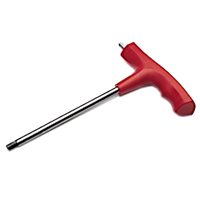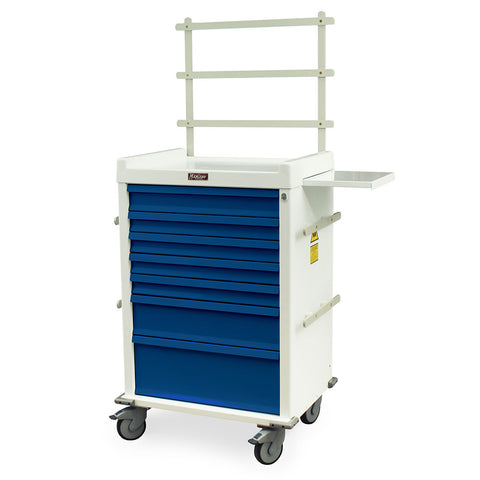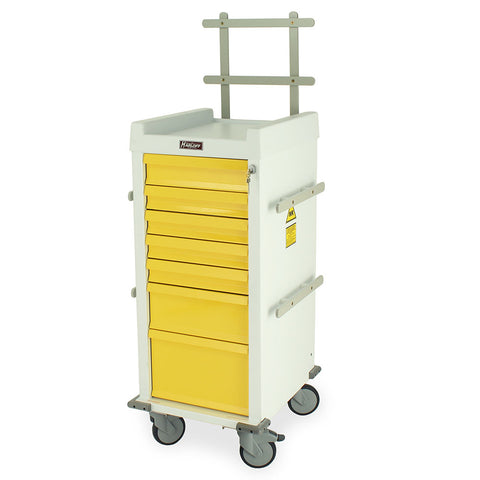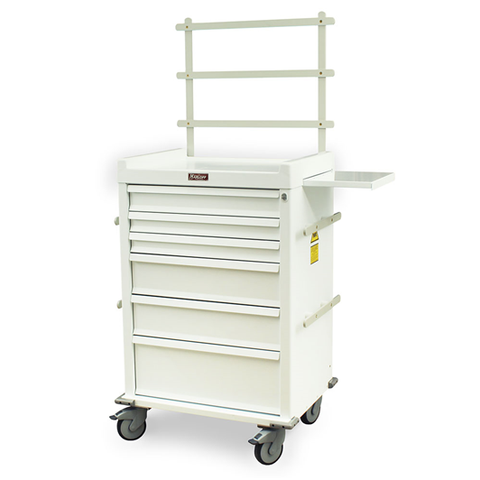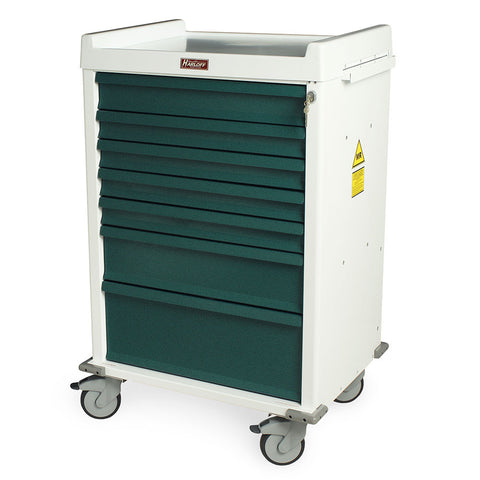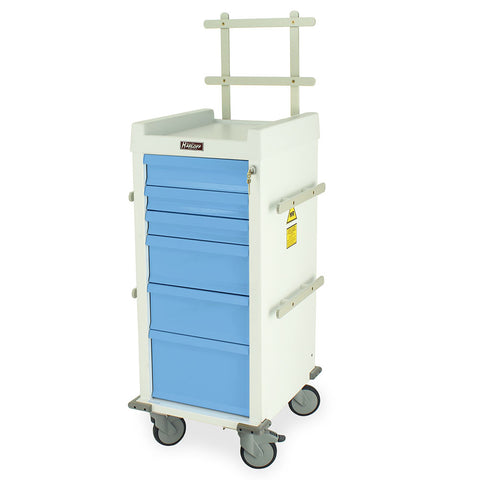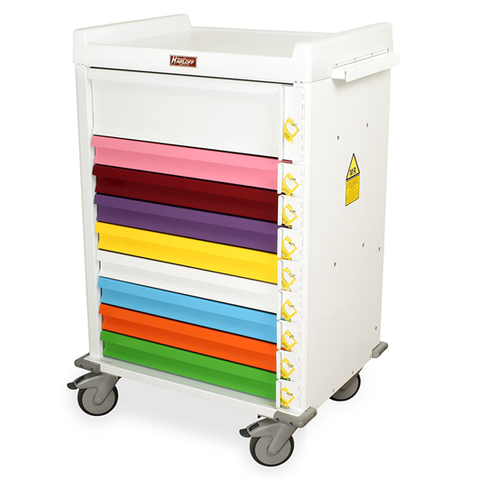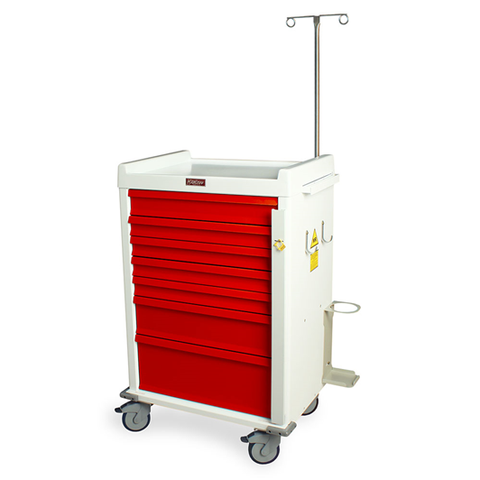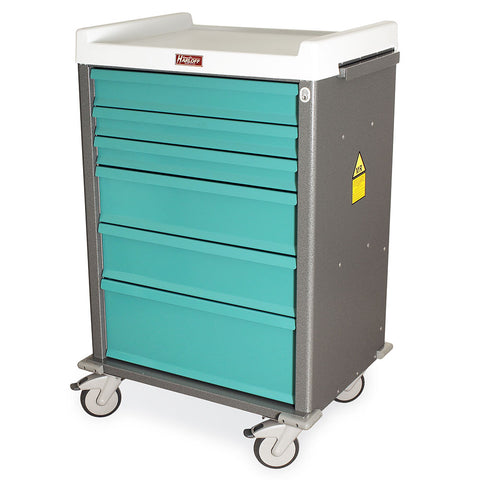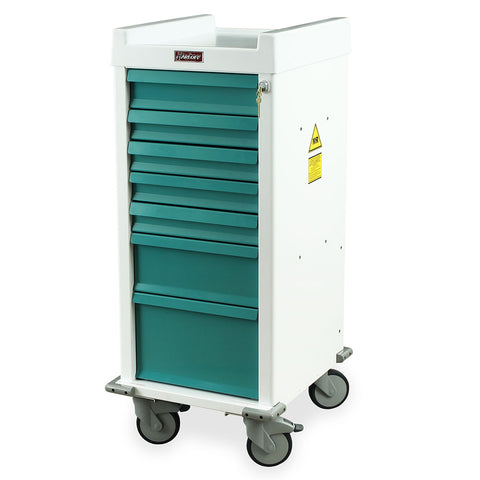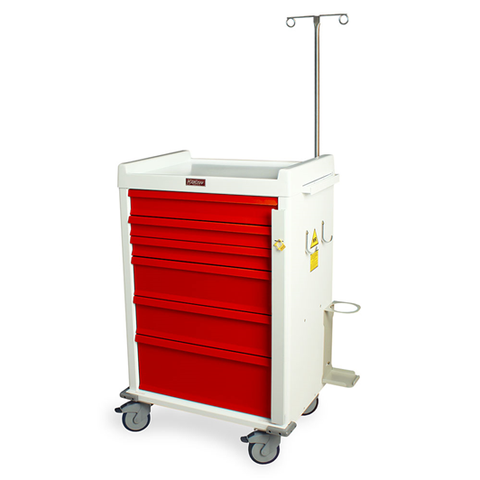In healthcare settings, the choice between an MRI stretcher and a standard stretcher is crucial for patient safety, comfort, and the quality of diagnostic imaging. Understanding the distinctions between these two types of stretchers helps healthcare providers make informed decisions that align with safety protocols and operational efficiency.
Introduction to MRI and Standard Stretchers
Why the Right Stretcher Matters in Healthcare
Selecting the appropriate stretcher is vital for ensuring patient safety during transport and procedures. The right stretcher supports patient comfort, facilitates ease of movement, and complies with safety standards, particularly in specialized environments like MRI suites.
Overview of MRI Suites and Safety Requirements
MRI suites are controlled environments where strong magnetic fields are used for imaging. These fields can interact with ferrous materials, posing risks to both patients and equipment. Therefore, MRI-conditional stretchers are designed to be non-ferrous to prevent interference with the magnetic field and ensure safety.
Common Misconceptions About Hospital Stretchers
A prevalent misconception is that all hospital stretchers are suitable for MRI environments. However, many standard stretchers contain ferrous components that can be hazardous in MRI suites. It's essential to distinguish between standard and MRI-conditional stretchers to maintain safety.
Key Differences Between MRI-Conditional and Standard Stretchers
Material Construction: Ferrous vs. Non-Ferrous
MRI-conditional stretchers are constructed from non-ferrous materials like aluminum, which do not interact with magnetic fields. In contrast, standard stretchers often contain ferrous metals that can become projectiles in an MRI environment, posing significant risks.
Compatibility with MRI Magnetic Fields
MRI-conditional stretchers are designed to be safe within the magnetic fields of MRI machines, typically up to 7 Tesla. Standard stretchers, lacking this design consideration, can cause artifacts in imaging and pose safety hazards.
Design Considerations for Patient Safety and Comfort
MRI-conditional stretchers are equipped with features that enhance patient comfort and safety, such as adjustable backrests and high-density mattresses. These features are tailored to the unique needs of patients undergoing MRI procedures.
Impact on Imaging Quality
Using a non-conditional stretcher in an MRI suite can introduce artifacts into the imaging, compromising diagnostic accuracy. MRI-conditional stretchers are designed to minimize such risks, ensuring high-quality imaging results.
MRI-Conditional Stretchers: Features and Advantages
Non-Magnetic Materials Used in MRI Stretchers
MRI-conditional stretchers utilize materials like aluminum and non-ferrous alloys to prevent interference with the MRI's magnetic field. This construction ensures both safety and compliance with MRI safety standards.
Weight Capacity and Adjustable Height Options
These stretchers often feature adjustable height settings and can support a range of patient weights, accommodating diverse patient needs and facilitating ergonomic handling by healthcare staff.
Maneuverability in MRI Suites
Designed for ease of movement, MRI-conditional stretchers are equipped with high-quality casters and ergonomic handles, allowing healthcare providers to navigate the often confined spaces of MRI suites efficiently.
Accessories and Attachments Compatible with MRI
MRI-Conditional stretchers can be equipped with compatible accessories, such as MRI-safe headrests and safety straps, enhancing patient comfort and security during transport within the MRI suite.
Standard Stretchers: Features and Limitations
Typical Materials and Construction
Standard stretchers are commonly made from materials like steel, which are durable but ferrous. This construction makes them unsuitable for use in MRI environments due to the risks posed by magnetic fields.
Why Standard Stretchers Can Be Unsafe in MRI Suites
The ferrous components of standard stretchers can become projectiles in the strong magnetic fields of MRI machines, posing serious safety hazards to patients and staff.
Limitations in Patient Transport for Imaging Departments
Standard stretchers lack the design features necessary for safe and efficient transport within MRI suites, such as non-ferrous materials and compatibility with MRI equipment, limiting their utility in imaging departments.
Risk of Magnetic Interference and Imaging Artifacts
Using standard stretchers in MRI suites can introduce magnetic interference, leading to artifacts in imaging that can compromise diagnostic accuracy and patient safety.
When to Use MRI-Conditional vs. Standard Stretchers
Hospital MRI Suites
In hospital MRI suites, it's imperative to use MRI-conditional stretchers to ensure patient safety and maintain the integrity of diagnostic imaging.
Equip Your Team with Tools They Can Trust
Get high-quality, MRI-dedicated equipment that supports safer scans, better positioning, and smoother patient care.
View Trusted ProductsEmergency Departments and Trauma Centers
In emergency settings, MRI-conditional stretchers facilitate safe and efficient patient transport to MRI suites, supporting timely and accurate diagnoses.
Outpatient Imaging Centers
Outpatient imaging centers benefit from using MRI-conditional stretchers to provide safe and comfortable transport for patients undergoing MRI procedures.
Special Cases: Bariatric or Pediatric Patients
Specialized MRI-conditional stretchers are available to accommodate the unique needs of bariatric and pediatric patients, ensuring safety and comfort during MRI procedures.
Cost Comparison and Value Considerations
Upfront Costs vs. Long-Term Safety Benefits
While MRI-conditional stretchers may have a higher upfront cost, they offer long-term safety benefits by reducing the risk of accidents and ensuring compliance with MRI safety standards.
Maintenance Requirements and Durability
MRI-conditional stretchers are designed for durability and require regular maintenance to ensure optimal performance and longevity.
Operational Efficiency and Workflow Impact
Investing in MRI-conditional stretchers can enhance operational efficiency by streamlining patient transport within MRI suites and reducing the risk of delays due to safety concerns.
Choosing the Right Stretcher for Your Facility
Evaluating MRI Room Workflow Needs
Assessing the specific workflow requirements of your MRI suite helps in selecting a stretcher that aligns with operational needs and enhances patient care.
Weight, Dimensions, and Ergonomics
Consideration of patient weight capacities, stretcher dimensions, and ergonomic features ensures that the selected stretcher meets the diverse needs of patients and healthcare providers.
Regulatory Compliance and ASTM F2503 Standards
Ensuring that the chosen stretcher complies with regulatory standards, such as ASTM F2503, guarantees safety and adherence to industry best practices.
Frequently Asked Questions
-
Can a standard stretcher ever be used in an MRI room?
Standard stretchers should not be used in MRI rooms due to the risks posed by ferrous materials interacting with the MRI's magnetic field.
-
What makes an MRI stretcher “MRI-Conditional”?
An MRI stretcher is considered “MRI-Conditional” when it is constructed from non-ferrous materials and designed to be safe for use in MRI environments under specified conditions.
-
How do MRI stretchers prevent interference with scans?
MRI stretchers prevent interference by using non-ferrous materials that do not interact with the MRI's magnetic field, ensuring clear and accurate imaging.
-
Are MRI stretchers compatible with all scanner field strengths?
MRI stretchers are typically designed to be conditional with specific MRI scanner field strengths, and it's essential to verify compatibility with the specific MRI equipment in use.
-
How often should MRI stretchers be maintained or inspected?
Regular maintenance and inspection of MRI stretchers are necessary to ensure their safe operation and compliance with safety standards.
